I have to admit my first attempt to read Ian McHarg’s Design with Nature while in school was haphazard to say the least. But there was drinking, tomfoolery to be had, and skirts to chase, what concern did I have with the environment and my impact on it as a designer.
Well now that I’m older, wiser, and MUCH more mature (pronounced MU-T-OOR) I’ve been revisiting icons of landscape architecture literature. After reading Design with Nature I felt an immediate connection to McHarg’s belief’s and amazed by his teachings, written in 1969, are the very principles which some landscape architects today hale as “New Trends” in landscape architecture known as sustainable design. Well it’s certainly not new, and isn’t sustainable design synonymous with the practice of landscape architecture? Its unfortunate that some of us our having to re-adapt our practices to the concepts of design with nature due to climatic and market driven necessities. But regardless of the motives, it’s a positive adaptation and one I think McHarg would approve.
Growing up in Glasgow McHarg experienced serenity in the natural environments of the Scottish countryside. After returning from soldiering in the British Parachute Brigade in Italy during WW II, he returned to Glasgow to find it different as he remembered, his natural playgrounds now replaced by the stark effects of industrialization. It was then McHarg began his commitment to bringing the natural serenity he found as a child to the city.
A natural dissident, McHarg wrote what many consider to be the ecological design classic in a very personal, very untextbook-like style. A native genius, he refuses to be constrained by traditional categories that separate self from others, civilization from ecology. It is this very personal touch that keeps Design With Nature as essential to any landscape architects library forty years after its inception. No one expresses the essence of his work better than McHarg himself:
“This book is a personal testament to the power of sun, moon, and stars, the changing seasons, seedtime and harvest, clouds, rain and rivers, the oceans and the forests, the creatures and the herbs. They are with us now, co-tenants of the phenomenal universe, participating in that timeless yearning that is evolution, vivid expressions of time past, essential partners in survival and with us now involved in the creation of the future.
Our eyes do not divide us from the world, but unite us with it. Let this be known to be true. Let us then abandon the simplicity of separation and give unity its due. Let us abandon the self mutilation which has been our way and give expression to the potential harmony of man-nature. The world is abundant, we require only a deference born of understanding to fulfill man’s promise. Man is that uniquely conscious creature who can perceive and express. He must become the steward of the biosphere. To do this he must design with nature.”
McHarg’s book might be criticized from a modern perspective. Design with Nature does not describe complete cyclical ecology and focuses mostly on patterns of land use and the transitions of human settlements. This may be a cause of the time which it was written; suburban sprawl was seen by many as the principal threat to the natural environment in the late 1960’s. As did many of his contemporaries, including Frank Lloyd Wright, McHarg views the automobile as a permanent fixture, and discusses how highways can be better situated in the landscape, not eliminated or scaled back.
Design with Nature does not aspire to be a textbook of ecological design as way we currently understand the field. As a book of preservation and the reintroduction of nature back into the city, you might not find a better a better replacement. I strongly encourage those who have yet to read it to pick up a copy, and if you have and it’s been a while, dust it off for another go.
Looking for other great resources for your design library?
Head over to our resource section where we have curated a collection of essential Landscape Architecture Books >>
Review by Adam E. Anderson, LEED AP
www.designundersky.com


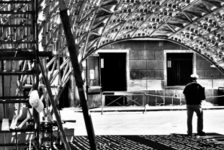
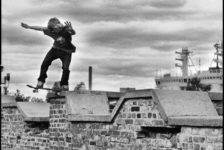
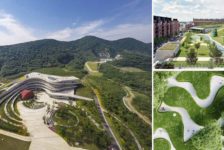
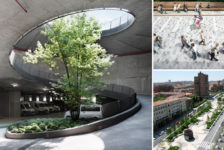

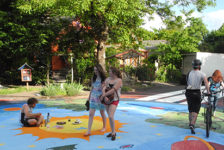

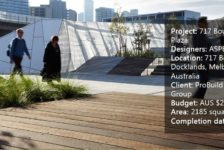

Daniel Miller
I’m about 1/3 of the way through this book and have had a difficult time putting it down.
Nice article about it, I think it’s a nice reflection upon his work.
nca
We were of course assigned to read it two years ago in our first studio at CSU. I didn’t read ti and instead spent all of my time that semester drawing. Recently, I’ve picked the book up again, but was cut short with studio projects, work, and other assigned reading. I like your point about sustainable design and new trends really not being so new. I think I’ve been slowly heading toward this same realization whilst researching for a paper on sustainable planning and looking at design prior to the early to mid twentieth century.
Charles A. Warsinske
I was in school when McHarg published his book. Shortly after, he came out here to Washington State and addressed the legislature. It was quite something. Our landscape planning projects at during that time at Washington State University were all wrapped up in the McHargian process.
Charlie
Alex Polen
It’s a shame how so many of us are not given the opportunity to apply the McHargian principles to the projects that ‘pay the bills’. 99% of our clients have money on the mind rather than ecology. I guess we all have to do the best we can within the boundaries we must work within.
I think it up to the agencies to force these principles on. t. he private sector developers if this ever has a chance to implemented into the main stream of new projects.
Great review AEA.